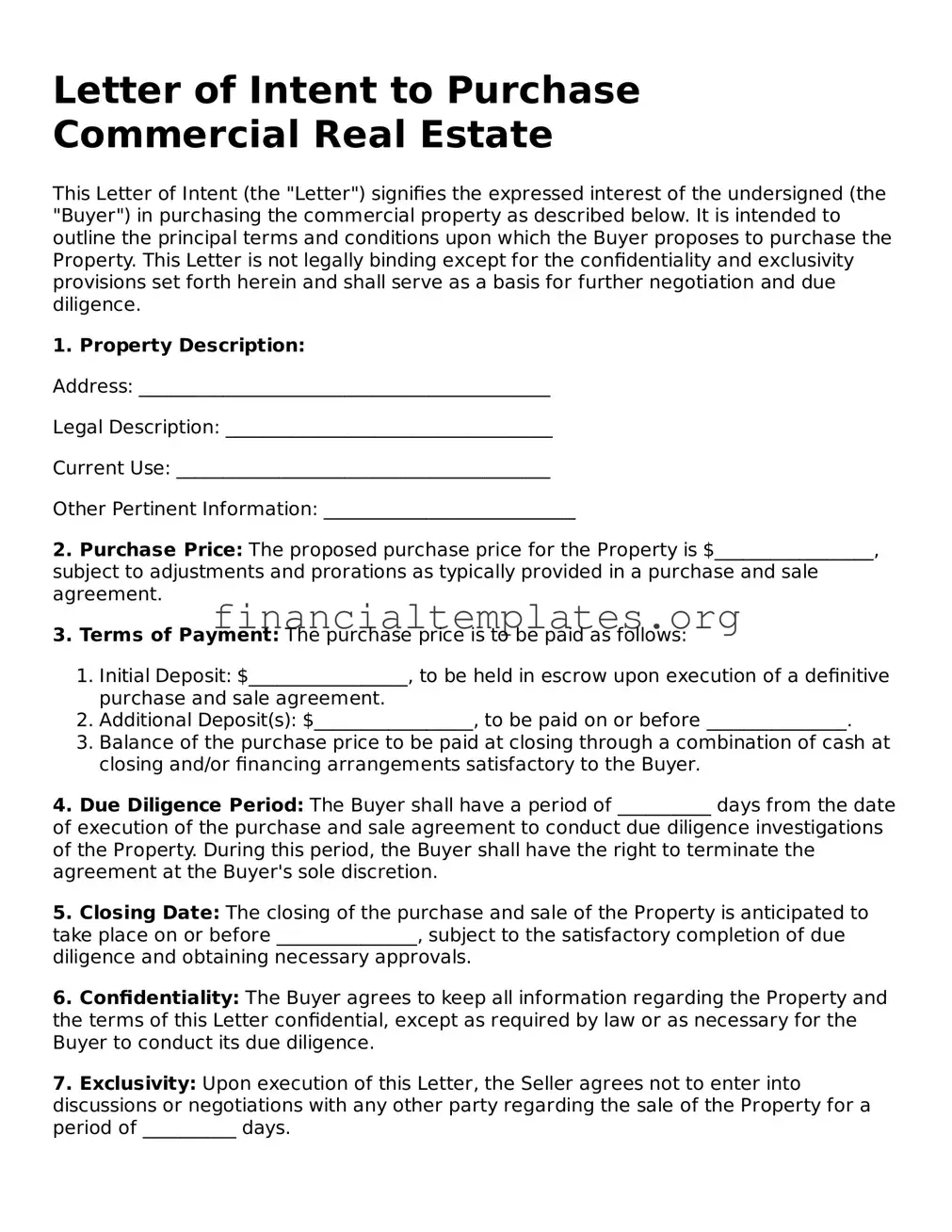Letter of Intent to Purchase Commercial Real Estate
This Letter of Intent (the "Letter") signifies the expressed interest of the undersigned (the "Buyer") in purchasing the commercial property as described below. It is intended to outline the principal terms and conditions upon which the Buyer proposes to purchase the Property. This Letter is not legally binding except for the confidentiality and exclusivity provisions set forth herein and shall serve as a basis for further negotiation and due diligence.
1. Property Description:
Address: ____________________________________________
Legal Description: ___________________________________
Current Use: ________________________________________
Other Pertinent Information: ___________________________
2. Purchase Price: The proposed purchase price for the Property is $_________________, subject to adjustments and prorations as typically provided in a purchase and sale agreement.
3. Terms of Payment: The purchase price is to be paid as follows:
- Initial Deposit: $_________________, to be held in escrow upon execution of a definitive purchase and sale agreement.
- Additional Deposit(s): $_________________, to be paid on or before _______________.
- Balance of the purchase price to be paid at closing through a combination of cash at closing and/or financing arrangements satisfactory to the Buyer.
4. Due Diligence Period: The Buyer shall have a period of __________ days from the date of execution of the purchase and sale agreement to conduct due diligence investigations of the Property. During this period, the Buyer shall have the right to terminate the agreement at the Buyer's sole discretion.
5. Closing Date: The closing of the purchase and sale of the Property is anticipated to take place on or before _______________, subject to the satisfactory completion of due diligence and obtaining necessary approvals.
6. Confidentiality: The Buyer agrees to keep all information regarding the Property and the terms of this Letter confidential, except as required by law or as necessary for the Buyer to conduct its due diligence.
7. Exclusivity: Upon execution of this Letter, the Seller agrees not to enter into discussions or negotiations with any other party regarding the sale of the Property for a period of __________ days.
8. Governing Law: This Letter shall be governed by and construed in accordance with the laws of the State in which the Property is located, without giving effect to any principles of conflicts of law.
This Letter is intended as a preliminary indication of interest and does not constitute a binding contract except for the confidentiality and exclusivity provisions contained herein. Either party may terminate negotiations at any time, for any reason, upon written notice to the other party.
Yours sincerely,
______________________________________
Buyer's Name: ___________________________
Buyer's Contact Information: ___________________________
Date: __________________________________
Seller's Acknowledgment:
This Letter of Intent to Purchase is hereby acknowledged and accepted by the undersigned on this _____ day of __________, 20__.
______________________________________
Seller's Name: ___________________________
Seller's Contact Information: ___________________________
